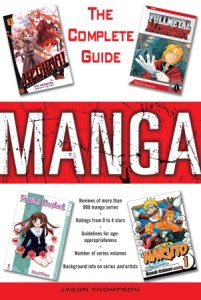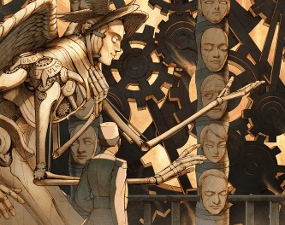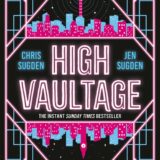Used bookstores are veritable treasure troves, as I’m sure many Amazing Stories readers will agree. Digging through the shelves and piles of every type of book imaginable is a bibliophile’s dream especially when it doesn’t break the bank. But used bookstores here in the States are not well known for stocking a wide variety of comic books, let alone even harder-to-find manga.
And yet a couple weeks ago, as I was perusing at one of the local shops, I found quite an incredible book: Jason Thompson’s Manga: The Complete Guide. It was on a tall, narrow shelf reserved for “graphic novels,” a shelf littered with everything from those insidious “how-to-draw” books to the underground comics of the 80s and 90s, and even to a few random volumes of manga and titles like Hellboy. But among them all, this tome caught my attention, tugging at both my heart- and my purse-strings.

Published in 2007, Manga: The Complete Guide gives well-worded reviews of every single manga licensed and published in the US up to that point. The text is small and the selection is varied; I’m trying to read the entire reference book cover to cover, and I’m currently only halfway through. But despite the heftiness, it’s been quite an enjoyable read!
In addition to the reviews (penned by Thompson and a small crew of other manga specialists – because no one could possibly read over 900 titles on their own in time for publication), there are extremely educational essays on manga’s history, different genres of manga (I learned that “phantom thief” is a genre specific to Japan), and overviews of general Japanese history.
So what? Most casual fans of animanga aren’t quite as nerdy as I am and wouldn’t want to wade through 500+ pages of miniscule print and summaries for manga that run the gamut from exceedingly excellent to awfully awful. But I think this particular book is good evidence that manga – and its sister art form, anime – have infiltrated Western society quite successfully. This is a guidebook for newbies and diehard fans alike, and the titles literally span every genre possible, including “business manga,” “pet manga,” and “cooking manga,” none of which are particularly well known, but which have all existed in the US for at least the last decade. The back of the book even has a separate overview and reviews for “yaoi” and “adult” genres!
Maybe the used bookstore isn’t the greatest place to find your new favorite comic book (because lets face it, those things are collectable and also really awesome, so who wants to get rid of them?), but it certainly can’t hurt to browse; you might find something even more valuable (and at half the price!).
[Note: It is possible to find used manga and other comic books; often comic book stores will have a section for used graphic novels. This is a really great deal, because manga are usually about $10 apiece, so getting them for half off is pretty great – and there are a lot more pages in your standard manga than in a Western comic book issue!]











Ok, I need to own this.
What store did you find this in? I’ll need to make a visit when I’m up there in a few weeks. 🙂
I found it at The Raven, so there’s not likely to be another copy. I think it’s out of print? But you might be able to find it on Amazon or something. It’s really a fantastic book.